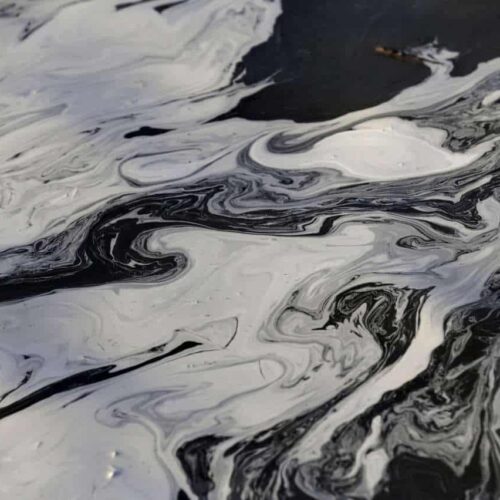Introduction
The Environmental Protection Agency on Friday announced the first-ever national standards regulating the disposal of coal ash – a byproduct of electric power generation – like everyday trash. The much-anticipated announcement comes under court order in a lawsuit filed against the agency by environmental groups following years of regulatory delay.
Speaking to reporters in a press call, EPA Administrator Gina McCarthy touted the agency’s rule as a “milestone” for communities living in the shadows of 1,425 coal ash ponds and landfills in 37 states throughout the nation. The new federal requirements for coal ash dump sites aim to prevent catastrophic spills caused by structural failures, McCarthy said, as well as more insidious pollution caused by the ash’s leaching.
“We don’t just worry about large-scale failures,” the administrator said. “We worry about all the cases” of coal ash damage. Calling the final rule “a smart, very large step forward,” she explained that “it will help prevent the pollution of air and water and protect our public health.”
Environmentalists – who’d hoped the waste, which contains harmful metals such as arsenic and lead, would be classified as hazardous – were less than enthusiastic about the rule.
“We feel EPA had a golden opportunity and a clear mandate,” said Lisa Evans, a senior attorney at the nonprofit law firm Earthjustice who handled the coal ash litigation against the EPA. “They squandered it.”
One of the nation’s largest refuse streams at 136 million tons a year, coal ash has fouled water supplies, endangered public health and threatened communities across the country. The EPA itself has recognized as many as 160 “damage” cases in which coal ash from ponds, landfills and other dumpsites have contaminated nearby aquifers, streams, rivers and lakes or tainted the air.
In a series of stories, the Center for Public Integrity highlighted the environmental and human health consequences of coal ash.
Under the EPA’s final rule, new and existing ash ponds and landfills will face requirements that dozens of states nationwide have failed to put in place on their own — routine groundwater monitoring, for instance, and protective liners for all new units. The measure calls for regular safety inspections at the nation’s 1,070 ash ponds, which can rupture and spill tens of thousands of tons of coal ash into the environment; earlier this year, in fact, Duke Energy’s coal ash pond spewed 39,000 tons of waste into the Dan River in North Carolina.
Other requirements call for the closure of ash ponds and landfills that fail to meet structural standards, and that will no longer receive coal ash. They would also shutter any unlined ash pond that had already contaminated groundwater beyond federal safety standards.
Debate over federal regulation has dragged on for decades. After a disastrous December 2008 coal-ash spill in eastern Tennessee — among the largest environmental disasters in American history, unleashing 5.4 million cubic yards of the waste — the EPA pledged to act. Two years later, in June 2010, the agency unveiled a proposal to begin regulating the disposal of coal ash, presenting two alternatives in a 563-page draft. Under the first option, the EPA would classify the ash as hazardous, triggering a series of strict controls for its dumping. The second option would designate the ash non-hazardous, and subject it to less stringent national standards that amount to guidelines for states.
After unveiling its proposal, the EPA failed to issue rules, sparking the lawsuit by Earthjustice and 10 other groups over the slow pace of the agency’s regulatory action
Environmental advocates have long pushed for the “hazardous” designation. They voiced their disappointment over national standards that do not come with the teeth of federal enforcement, instead leaving oversight up to the states and citizens.
Evans, the Earthjustice lawyer, and other environmental advocates had hoped the agency would phase out all existing coal ash ponds, active and inactive. The EPA has chosen to do something less stringent and less effective, they say, by only requiring the closure of ash ponds that have clearly contaminated groundwater, among other issues.
“We are better off today than we were yesterday. There were no federal coal ash standards,” Evans said, explaining that the new rule will provide residents with key information on whether coal ash is seeping into groundwater. “But they represent a weak compromise that we hope can be strengthened in the future.”
Industry groups lauded the EPA’s designation of coal ash as non-hazardous, yet expressed concern about hints of future regulation.
In a written statement, Jim Roewer, of the Utility Solid Waste Activities Group, the utility industry’s main lobby on the topic, said that “while EPA has appropriately determined to regulate coal ash as a non-hazardous waste, we are disappointed with the Agency’s suggestion that it is still evaluating whether to reverse this determination.”
Roewer alluded to a possible fight on Capitol Hill, saying his group will continue to push for legislation establishing “baseline federal requirements for the disposal of coal ash that are enforced by the states.”
The House has passed legislation to fight coal ash rules in each of the last two Congresses.
Sen. Jim Inhofe (R-Okla.), the likely incoming chairman of the Senate Environment and Public Works Committee, issued a joint statement with Senator-elect Shelley Capito (R-W.Va.), saying the rule will be costly and “leave a detrimental impact” on states who already effectively managing coal ash. Vowing to pursue legislation, the statement paints the EPA’s rule as another battlefront in President Obama’s “war on coal.”
“We are not pleased with this outcome,” Inhofe and Capito said. “We will work to ensure legislatively that states, municipalities, and American consumers have the proper protections from the President’s continued attacks on our nation’s abundant and affordable energy resources.”
Read more in Environment
Environment
Chemical Safety Board cuts investigations amid alleged mismanagement
Allegations of severe mismanagement continue to haunt the Chemical Safety Board, tasked with investigating industrial chemical accidents
Environment
Environment stories you may have missed
The Center for Public Integrity’s best environment stories from 2014




Join the conversation
Show Comments